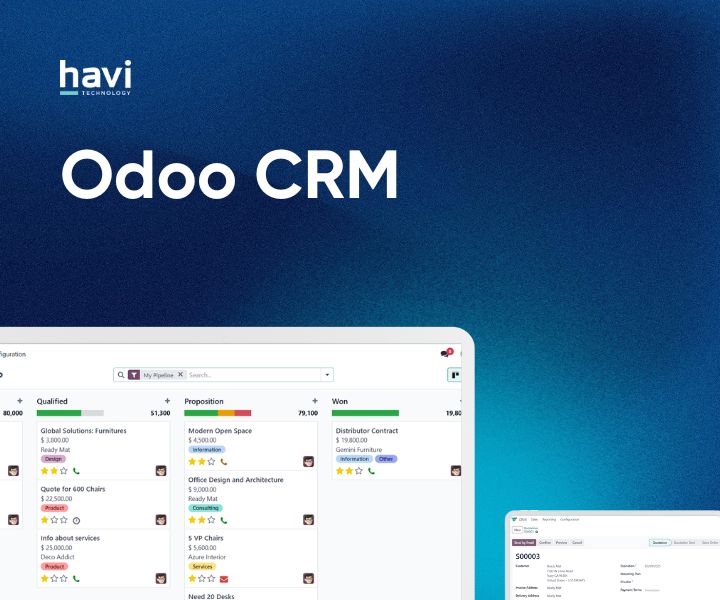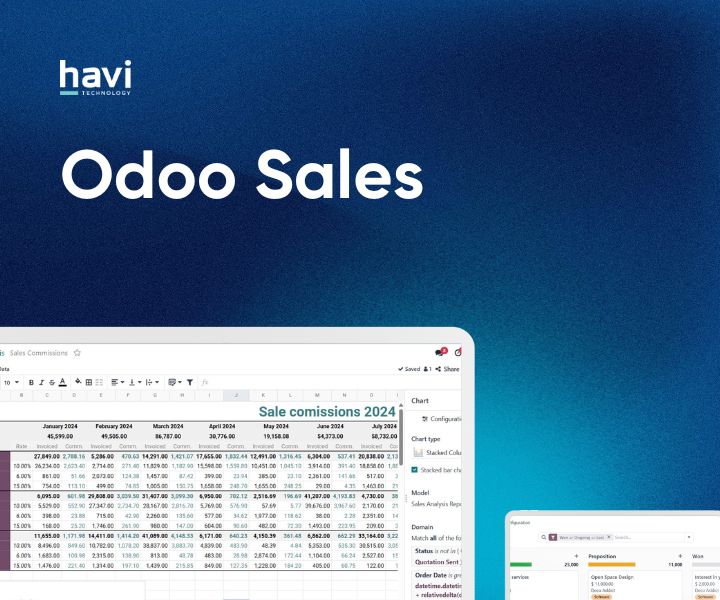TABLE OF CONTENTS
- 1. Website and Customer Experience
- 1.1. Website & eCommerce: Guided Onboarding, New Templates, Google Merchant Sync
- 1.2 Live Chat and Discuss: Expertise Routing, Chat Insights, Status Controls
- 2. Sales, CRM and Subscriptions
- 2.1 Sales: Editable Optional Products, Catalogue Sections, Portal Top-Up
- 2.2. CRM and Marketing: AI Probability, Lead Sources, Kanban Linking
- 2.3. Subscriptions: Prorated Billing, One-Time Sales, Portal Edits
- 3. Inventory, Purchase and Barcode
- 3.1. Inventory and Purchase: Packages within Packages, Forecasted Reports, Suggested Quantity to Replenish
- 3.2. Barcode: Operation Descriptions, Product Source Location, Lot and Serial Number Properties
- 4. Manufacturing, Shop Floor & Planning
- 4.1. MRP: Gantt View, Editable Deadlines, Labour-Based Valuation
- 4.2. Shop Floor & Planning: Barcode Workflows, Shift Scheduling, Routing Edits
- 5. Project, Timesheets and Services
- 5.1. Project and Timesheet: Smart Assign, Mobile Grid View, Priority Alerts
- 5.2. Field Service and Appointments: Calendar View, Technician Tracking, Mass Planning
- 6. HR, Payroll and Expenses
- 6.1. Payroll: Redesigned Engine, Payslip Correction, Unified Master Report
- 6.2. Time Off and Expenses: Odoo Master Cards, Multi-Expense Submission, Complex Duration
- 7. Accounting, Compliance and ESG
- 7.1. Accounting: Peppol Invoicing, Bank Sync, BAS Reports
- 7.2. ESG App: Scope 1–3 Emissions, CSRD Reporting, Auto Category Mapping
- 8. AI, Documents and Sign
- 8.1. AI App: Prompt Commands, Auto Field Completion, Voice and Web Search
- 8.2. Sign and Documents: Bulk Signing, Chatter Integration, Access Controls
- Odoo 19: What’s Coming For Australia?
- 1. Fully compliant Payroll AU with STP Phase 2 and SuperStream
- 2. ABA file payments, Direct Debit for wages/super
- 3. Multi-stream YTD import, backpay, and validations
- 4. 2025–26 tax rules, STSL changes, ATO security
- 5. Peppol invoicing, GST toggle, fringe benefits, BAS automation
- 6. Tyro integration
- 7. Roadmap: SBR BAS lodging, Open Banking, PEL Access, Fiduciary Program
- Odoo 19’s FAQs For Australian Teams
- 1. How should Australian businesses prepare?
- 2. How is Odoo 19 different from Odoo 18 in Australia?
- 3. How can AI in Odoo 19 be tailored for real business outcomes?
- 4. How can I try Odoo 19 or upgrade from my current version?





Odoo Invoicing is a modular financial component within the Odoo ERP suite that enables businesses to issue, manage, and reconcile invoices with speed, compliance, and full operational integration. Unlike many standalone tools, Odoo Invoicing isn’t just a billing module - it’s a system of record that supports automation, regulatory compliance, and operational scale.
For Australian businesses, the relevance of Odoo Invoicing has increased significantly with recent updates in versions 16 to 19. These include GST and BAS support, built-in PEPPOL BIS Billing 3.0 format for eInvoicing, and localised features like ABA file exports, ATO-mandated fiscal calendars, and Tyro/EFTPOS integrations. With Australia’s shift toward eInvoicing mandates and digital compliance, many businesses are seeking alternatives to standalone tools, especially those outgrowing their limitations in multi-entity, multi-currency, or integrated workflows.
In this guide, we’ll walk you through:
Whether you’re running a mid-sized operation or scaling up across entities, this guide offers both the practical foundation and strategic clarity needed to evaluate Odoo as your next invoicing solution.
8 Key Features Of Odoo Invoicing
Odoo Invoicing is defined by eight essential features that enable fast, compliant, and scalable invoicing across the entire financial lifecycle. From professional invoice creation to multi-company support and real-time reporting, these capabilities ensure operational efficiency, compliance with Australian standards, and readiness for growth.
1. Fast & Professional Invoice Management
Fast & professional invoice management in Odoo enables businesses to create compliant, clearly structured, and client-ready invoices in just a few steps, minimising administrative friction.
Although Odoo provides a standalone Invoicing app in some setups, invoicing features are fully integrated into the Accounting app once it is installed. This approach offers a centralised workspace that includes tax configuration, journal entries, reconciliation, and financial reporting. The screenshot below illustrates how a new customer invoice is directly generated in Odoo Accounting, with customer and product details automatically populated based on linked records:
2. Automated Tax & Localisation for Compliance
Automated tax and localisation in Odoo ensures that every invoice adheres to GST requirements, BAS compliance, and ATO-recognised fiscal structures, out of the box and without manual work. The following screenshot shows that Odoo records the DGST balance as part of BAS reporting by generating a journal entry and auto-balancing tax values across the correct BAS tax grids:
3. Streamlined Refunds & Credit Management
Streamlined refunds and credit management in Odoo give finance teams full control over credit notes, enabling fast reversals, transparent reconciliation, and real-time tracking of outstanding liabilities. In the image below, you can see that credit notes in Odoo are generated directly from posted invoices from the Accounting app:
4. Robust Vendor Invoice & Payment Workflow
Odoo provides a robust vendor invoice and payment workflow by integrating bill receipt, validation, and disbursement processes into a single platform, reducing risk and improving accounts payable efficiency. The screenshot below shows a vendor bill in draft status, ready for review before posting into the accounting ledger:
5. Integrated Multi-Currency & Payment Flexibility
Odoo supports integrated multi-currency and flexible payment options, enabling businesses to manage international transactions accurately and accept payments across multiple channels and currencies. To review currency exchange differences, access your Miscellaneous Journals via the Accounting dashboard, as illustrated in the following image:
6. Recurring Billing & Subscription Management
Recurring billing and subscription management in Odoo automates invoice cycles based on product or contract terms, allowing businesses to manage long-term customer billing with zero manual tracking.
7. Multi-Company Support and Global Scalability
With multi-company support, Odoo enables centralised invoicing management across subsidiaries - preserving legal and financial separation while allowing operational scale across regions.
8. Real-Time Insights with Financial Reports
Real-time insights in Odoo empower finance teams with actionable dashboards, invoice tracking tools, and sales analytics to support faster decisions and proactive receivables management.
While these capabilities form the functional core of Odoo Invoicing, their full value is unlocked through strategic integrations. In the next section, we explore how Odoo connects with online payment gateways, Australian banks, and external platforms to deliver seamless automation, faster collections, and compliance with local financial systems.
What Are The Key Integrations That Enhance Odoo Invoicing?
The key integrations that enhance Odoo Invoicing are those that connect the system directly to online payment gateways, Australian bank feeds, and external accounting platforms, transforming invoicing from a stand-alone task into a connected, end-to-end financial workflow. These integrations reduce manual workload, accelerate cash flow, and ensure compliance with ATO and enterprise reporting standards.
The illustration below highlights key integrations with Australian-friendly solution providers for Odoo Invoicing:
1. Connecting with online payment gateways (e.g. Stripe, PayPal)
Odoo’s integration with major online payment providers enables customers to pay invoices instantly through embedded links, ensuring secure, real-time transactions and significantly reducing payment delays.
2. Linking to Australian bank feeds for automated reconciliation
Odoo integrates directly with Australian bank feeds to automate the import and reconciliation of transactions, allowing businesses to maintain accurate cash flow records with minimal manual intervention.
3. Syncing with external accounting tools or ATO systems
Odoo allows seamless data exchange with external accounting systems and ATO-compliant tools, supporting businesses that operate in hybrid environments or require precise regulatory alignment.
While these integrations deliver scalability and automation, mastering the core invoicing actions is key to getting started confidently. In the next section, we walk through essential tasks, such as issuing a customer invoice, managing credit notes, and setting payment terms, so your team can build a strong foundation in Odoo Invoicing from day one.
Odoo Invoicing Tutorial: How To Start With The Basics
Getting started with Odoo Invoicing begins by mastering the system’s foundational workflows - from issuing customer invoices and credit notes to managing vendor bills and setting clear payment terms. These core functions ensure businesses maintain accurate financial records, uphold compliance, and streamline their end-to-end billing operations. See the next illustration to have an overview of the basic steps for first-time Odoo Invoicing users:
To explore Odoo Invoicing in greater depth, refer to the official Odoo Accounting and Invoicing document or tutorial courses that guide you through invoice setup, billing operations, and best-practice configurations - perfect for new users and functional teams seeking hands-on clarity.
1. Issue a customer invoice
Issuing a customer invoice in Odoo creates a journal entry in the Sales Journal that accurately records revenue, GST, and payment terms, while automating the tracking of accounts receivable.
If the Accounting app is installed, most invoicing functionalities are already integrated within it. This unified interface provides finance teams with full control over tax configuration, journal posting, and compliance workflows. In contrast, the Invoicing app, available in some setups, offers a lighter, standalone view focused on basic billing tasks without advanced accounting features.
In this guide, we walk through the process using the Accounting app, as it offers complete visibility across your financial operations and aligns with Australian reporting standards.
2. Issue a credit note
A credit note in Odoo is a financial document used to reverse part or all of an original invoice, typically issued for product returns, disputes, pricing errors, or goodwill adjustments. It reduces the customer’s outstanding balance and is automatically reconciled with the related invoice.
You can issue credit notes directly within the Accounting app:
3. Issue a customer invoice from the sales order
Creating a customer invoice from a sales order in Odoo means converting sales order data into an invoice based on product invoicing policies, reducing manual duplication and errors.
4. Register a vendor bill
Registering a vendor bill in Odoo refers to capturing and validating a supplier invoice, either from a purchase order or manually, and posting it into accounts payable for future reconciliation.
5. Vendor bill digitisation
Vendor bill digitisation in Odoo uses AI and OCR to extract invoice data from PDFs received via email alias or uploads, reducing manual data entry and speeding up approval cycles.
6. Payment terms and conditions
Payment terms and conditions in Odoo define invoice due dates and legal disclaimers, ensuring billing transparency and enforceability with each transaction. These configurations are available under the Accounting app:
Now that we’ve explored how to operate Odoo Invoicing on a functional level, the next question is one of strategic fit: Is Odoo Invoicing built for the regulatory, financial, and digital needs of Australian businesses? In the next section, we’ll assess Odoo’s localisation for ATO compliance, Peppol readiness, and how it supports Australian business structures out of the box.
Is Odoo Invoicing Right for Australian Businesses?
Yes - Odoo Invoicing is purpose-built to meet the complex compliance, localisation, and operational needs of Australian businesses. From automated GST handling to Peppol eInvoicing and native support for ABA payments and Australian fiscal rules, Odoo provides a complete invoicing platform that aligns with both regulatory expectations and business realities.
1. Australian Taxation and GST Compliance
Odoo Invoicing ensures strict alignment with Australia’s taxation system by embedding GST rules, fiscal-year logic, and BAS-ready features directly into the accounting and invoicing engine. These features make it a practical choice for businesses transitioning from tools like Xero or MYOB, supporting seamless data exchange during upgrade projects, and helping businesses meet ATO audit readiness while maintaining operational continuity.
2. Peppol eInvoicing Support
Peppol eInvoicing in Odoo allows businesses to meet ANZ government invoicing mandates by generating and exporting structured XML eInvoices, fully compliant with the A-NZ PEPPOL BIS Billing 3.0 format. For teams evaluating whether Odoo 18 or 19 meets these compliance needs, our guide on Odoo Accounting Software explains what’s improved, why it matters, and how finance teams can prepare for Peppol adoption.
For businesses preparing to upgrade to Odoo 18, understanding the “why” (e.g. Peppol mandates), “how” (e.g. data migration from Xero/MYOB), and “what” (e.g. localisation features, ATO compliance tools) ensures the transition delivers both operational and regulatory value.
3. Localisation for Australia
Odoo’s localisation goes beyond compliance - adapting invoicing workflows, payment formats, and reporting logic for Australian businesses. This includes EFTPOS and Buy Now, Pay Later options like Afterpay and Humm, and seamless integration with Stripe for real-time online payments. On the vendor side, automated ABA file exports and structured bill digitisation are closely aligned with what’s covered in our Odoo Purchase module, ensuring both sales and procurement flows are tax-compliant and streamlined.
For Australian businesses, Odoo Invoicing is not just a capable tool - it’s a regulatory-compliant, scalable, and fully integrated solution that supports long-term financial control and operational agility.
On a final note, this guide explored how Odoo Invoicing supports Australian businesses through smart features, strategic integrations, and guided workflows. From invoice creation to Peppol compliance, it covers every step. Looking to streamline your invoicing process? Talk to Havi Technology - Australia’s trusted Odoo partner, helping you stay compliant and competitive with highly customisable and localised Odoo integrations.
References: